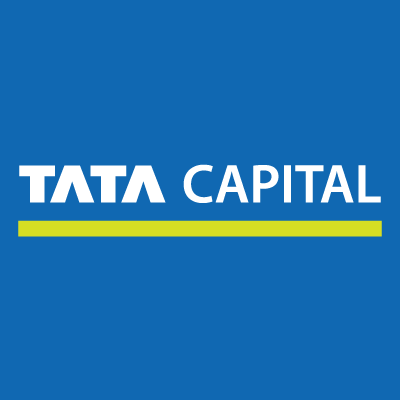
The much-awaited Tata Capital IPO is finally here, marking one of the biggest financial market events of the year. As the lending arm of Tata Sons, Tata Capital is among India’s top three non-banking financial companies (NBFCs) by loan book size. Backed by the trusted Tata Group, the IPO is expected to attract strong investor interest — but does the valuation justify the hype? Let’s dive deep into the Tata Capital IPO details, financials, valuation, and review.
🔹 Tata Capital IPO Details
Particulars Details
Tata Capital IPO GMP : Shares of the company are available at a premium of ₹13 in the grey market today
IPO Dates October 6 – October 8, 2025
Price Band ₹310 – ₹326 per share
Face Value ₹10 per share
Lot Size 46 shares
Issue Size Up to ₹15,512 crore
Implied Market Cap ₹1.4 lakh crore
Retail Quota 35%
Promoter Stake After IPO 85.5% (down from 95.6%)
Tata Capital aims to raise ₹6,846 crore through fresh equity and another ₹8,665.9 crore via an offer for sale (OFS). The proceeds will be used to strengthen its capital base and support future business expansion.
🔹 About Tata Capital
Founded in 2007, Tata Capital has grown into the third-largest NBFC in India by loan book size. The company offers a wide range of financial products, including:
Personal loans
Business and SME loans
Vehicle finance
Home loans
Infrastructure and renewable energy finance
As of March 2025, Tata Capital’s gross loan book is expected to cross ₹2.3 lakh crore, up from ₹2.1 lakh crore in FY23. The company serves over 2.5 million customers through 1,500+ branches across India.
About 30% of Tata Capital’s portfolio comprises unsecured loans, while the remaining portion focuses on secured lending such as housing and vehicle finance.
🔹 Subsidiaries of Tata Capital
Tata Capital operates through several specialized subsidiaries:
Tata Capital Financial Services Ltd (TCFSL)
– Handles retail and corporate loans
Tata Capital Housing Finance Ltd (TCHFL)
– Focuses on home loans and property loans
Tata Cleantech Capital Ltd (TCCL)
– Provides funding for renewable energy and sustainability projects
Together, these entities make Tata Capital a diversified financial powerhouse catering to retail, SME, and corporate segments.
🔹 Financial Performance
Tata Capital has shown steady growth over the past few years. Let’s look at its key financial metrics:
Metric FY23 VS FY25 (Estimated)
Net Profit ₹3,029 crore vs ₹3,665 crore
Interest Income ₹5,310 crore vs ₹10,690 crore
Gross Loan Book ₹2.1 lakh crore vs ₹2.3 lakh crore
Net Interest Margin (NIM) 5.1–5.2% vs 5.1–5.2%
Gross NPA 1.9% vs 2.1%
Return on Equity (RoE) 20.6% vs 12.6%
Return on Assets (RoA) 1.4% vs 1.6%
While interest income nearly doubled, the net interest margin (NIM) has remained modest compared to industry leaders. Bajaj Finance, for example, reported NIM around 9.5%, and Cholamandalam Investment around 7.8%.
Tata Capital’s lower NIM is mainly due to its expansion-driven cost structure, as it continues to grow its branch network and customer base.
🔹 Asset Quality and NPAs
Tata Capital has managed to maintain a reasonably healthy asset quality despite rapid growth. Its gross NPA ratio increased slightly from 1.9% in FY23 to 2.1% by June 2025, which is still better than many mid-tier NBFCs.
For comparison:
Bajaj Finance: 0.9%
Cholamandalam Finance: 3.5%
Shriram Finance: 4.3%
This reflects Tata Capital’s conservative lending approach and strong risk management framework.
🔹 Profitability and Margins
Despite strong top-line growth, Tata Capital’s margins lag behind peers. Its return on equity (RoE) fell from 20.6% in FY23 to 12.6% in FY25, primarily due to increased funding costs and expansion-related expenses.
However, the company’s return on assets (RoA) improved slightly to 1.6%, indicating operational efficiency gains.
The company’s yield on advances stood at 12.6%, which is competitive, though lower than top players who enjoy yields between 14% and 18%.
🔹 Valuation and Comparison
At the upper price band of ₹326 per share, Tata Capital’s valuation implies a price-to-book (P/B) ratio of around 3.4x.
Here’s how it compares with major peers:
Company P/B Ratio
Bajaj Finance 7.3x
Cholamandalam Investment 3.1x
HDB Financial Services 3.9x
Tata Capital (IPO) 3.4x
Thus, the IPO is priced at a slight premium to Cholamandalam but cheaper than Bajaj Finance, which reflects Tata Capital’s strong brand but relatively lower profitability.
🔹 Strengths of Tata Capital IPO
✅ Backed by Tata Group – one of India’s most trusted business houses
✅ Diversified loan portfolio across retail, SME, and corporate segments
✅ Steady growth in profits and loan book
✅ Strong brand equity and customer trust
✅ Focus on sustainable finance via Tata Cleantech Capital
🔹 Risks and Concerns
⚠️ Margins remain below peers, which may impact profitability
⚠️ Slight rise in NPAs, though still manageable
⚠️ Valuation premium compared to similar NBFCs
⚠️ Economic slowdowns or rate hikes could impact loan growth
🔹 Tata Capital IPO Review – Should You Invest?
The Tata Capital IPO offers investors a chance to own a piece of one of India’s most reputed financial institutions. Backed by a strong parentage, stable growth, and diversified operations, Tata Capital is well-positioned to capitalize on India’s expanding credit market.
However, given its moderate margins and slightly higher valuation, this IPO looks more suitable for long-term investors rather than short-term traders.
Verdict:
✅ Long-term investors: Attractive for portfolio diversification
⚠️ Short-term traders: May wait and watch post-listing performance
🔹 Conclusion
Tata Capital’s upcoming IPO is among the biggest in India’s NBFC space. The company’s strong fundamentals, trusted brand, and consistent growth make it a compelling story. While margins may lag peers, the risk-adjusted profile remains favorable.
If you believe in the long-term India growth story and the Tata Group’s financial discipline, the Tata Capital IPO 2025 is worth serious consideration.

Hello! I sent a request but haven’t received a response yet. I would be very grateful if you could contact me via WhatsApp.
wa.me+380508607093
what request have you sent